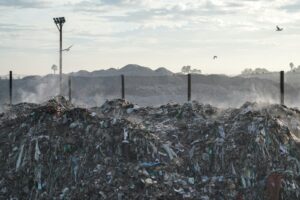Rethinking waste crime
A new report has highlighted how our flawed approach to tackling waste crime is costing hundreds of millions of pounds every year. Wholesale reform is required, explains Sam Corp
Despite significant additional funding and renewed vigour by governments and the regulators to tackle the issue, waste crime is more entrenched than ever.
It continues to undermine investment, growth and jobs within the waste and resources industry, blights communities and threatens our natural environment.
The report Rethinking Waste Crime restates the economic case for cracking down on waste crime with an up-to-date evaluation that shows that the annual cost of waste crime to both the public and private sectors has in fact increased, exceeding £604m in England in 2015 and £713m for the whole of the UK.
Many of the causes of waste crime are related to key failures in the existing rules and regulations, whereby a significant number of waste management activities have very little regulatory oversight. To this end, the report recommends a wholesale reform of the waste carrier, broker and dealer registration process as well as reform of the waste exemption regime.
The requirements for becoming a registered waste carrier, broker or dealer or registering an exemption are simply too lax. Contracting with a registered carrier or broker ought to provide some comfort to waste producers that their waste is being managed responsibly. However, all it actually provides is a veneer of legitimacy which is often relied upon completely to fulfil waste producers’ duty of care requirements.
Tougher enforcement
Implementing requirements for a level of competence for waste carriers and brokers with corresponding increases in registration fees to ensure proper regulatory oversight will go a long way to encouraging only capable and professional organisations to operate in our sector.
Similarly, the current exemption regime, where there are currently over 500,000 registrations in place, needs to be re focussed to ensure that it encompasses only genuinely low risk activities and that those activities are appropriately regulated.
The report also focuses on raising awareness of and tougher enforcement of waste duty of care requirements. While ESA and CIWM and others are endeavouring to raise awareness through the Right Waste, Right Place campaign, it is unfortunately still true that many of the failures in the waste management system occur at the start of the waste chain, with many waste producers inadvertently or irresponsibly transferring waste to third parties that do not manage waste in line with legal obligations.
Extending liability all parties in the waste chain i.e. producer, carrier, broker that led to the waste being deposited illegally would send out a very strong message of the need to take duty of care responsibilities seriously.
Finally, legitimate operators often express concern about the length of time it takes regulators to shut down illegal waste sites.
While the government’s Waste Crime Action Plan looked to improve this situation – there is a need to improve still further. Every day that an illegal site remains open not only adversely affects the environment, but also the viability of the legitimate operators in the sector.
Taken as a whole, the Environmental Services Association (ESA) believes the recommendations in the report will help reform the waste management system in England and have a significant impact in the fight against waste crime.
Following the launch in May 2017 we now look forward to continued discussions with government and regulators to make these recommendations a reality to help stamp out waste crime once and for all.
 Rethinking Waste Crime was commissioned by ESA and ESAET and written by Eunomia.
Rethinking Waste Crime was commissioned by ESA and ESAET and written by Eunomia.
Photo by HM Revenue & Customs  shows HMRC discovery of the UK’s largest ever toxic waste dump, linked to diesel laundering.
shows HMRC discovery of the UK’s largest ever toxic waste dump, linked to diesel laundering.















